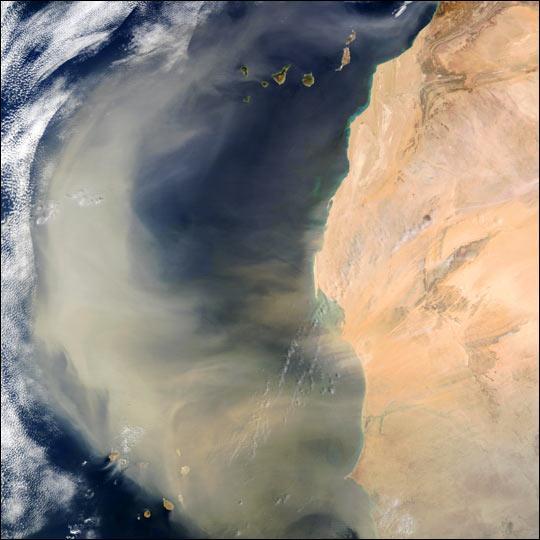
Bermuda's Stunning Red Soils Likely Blew in From Africa

Bermuda is known for its white sand beaches and its stunning red soils, called "terra rossa." But the origin of this red earth has been a bone of contention among geologists. How did it get there?
A new study suggests that much of it blew in all the way from Africa, accumulating little by little over the last 1 million years or so. In the study, published Sept. 1 in the Journal of Geophysical Research, scientists found that the chemical makeup of Bermuda's red soils closely matched that of clay-rich dust blown out of Africa.
The dust comes from the Sahara and the Sahel regions of northern Africa. It's blown to Bermuda by westerly winds, a process enhanced by hurricanes and tropical storms. Some research has suggested that this dust can actually disrupt hurricane formation, though scientists are still studying this potential effect.
The origin of Bermuda's clay-filled, iron-rich soils has been something of a mystery, since the white sand dunes and beaches of the island don't contain the minerals necessary for forming red earth, said co-author Daniel Muhs, a researcher at the U.S. Geological Survey. Bermuda's white sands are made of calcium carbonate and derived from eons-old corals and shellfish, Muhs told OurAmazingPlanet.
That left two possible origins for terra rossa: Either it formed from the breakdown of volcanic rock buried beneath sand dunes, or it blew in from elsewhere, likely Africa.
The study found, for the first time, that wind carrying African dust did make it as far north as Bermuda, which is at the same latitude as South Carolina. It also found that some of Bermuda's red soil is formed from the breakdown of volcanic rocks, but that this doesn't account for all of the island's earth.
Over time, this yearly peppering of dust has enriched soils in Florida, Bermuda and elsewhere in the Caribbean, without which the soil in these areas would be much poorer.
Sign up for the Live Science daily newsletter now
Get the world’s most fascinating discoveries delivered straight to your inbox.
"There aren't many plants that can grow in calcium carbonate," Muhs said. "For plants to grow, you need clays, which are reservoirs of soil nutrients, in this case blown in by the wind."
Reach Douglas Main at dmain@techmedianetwork.com. Follow him on Twitter @Douglas_Main. Follow OurAmazingPlanet on Twitter @OAPlanet. We're also on Facebook and Google+.











